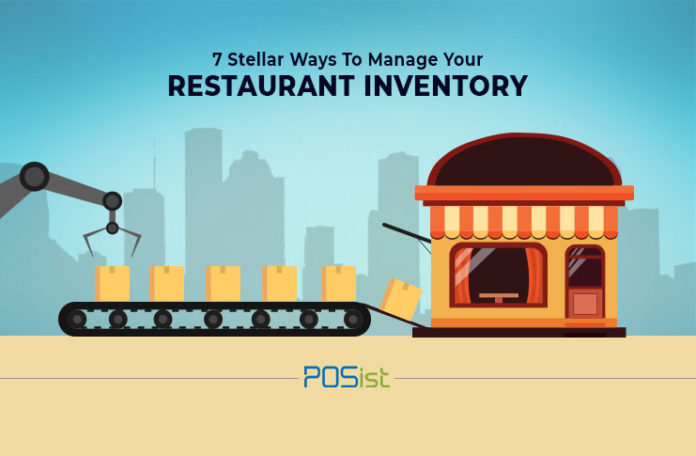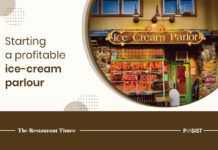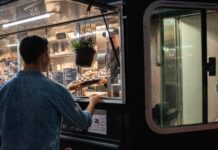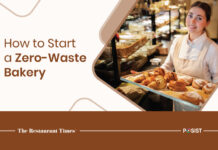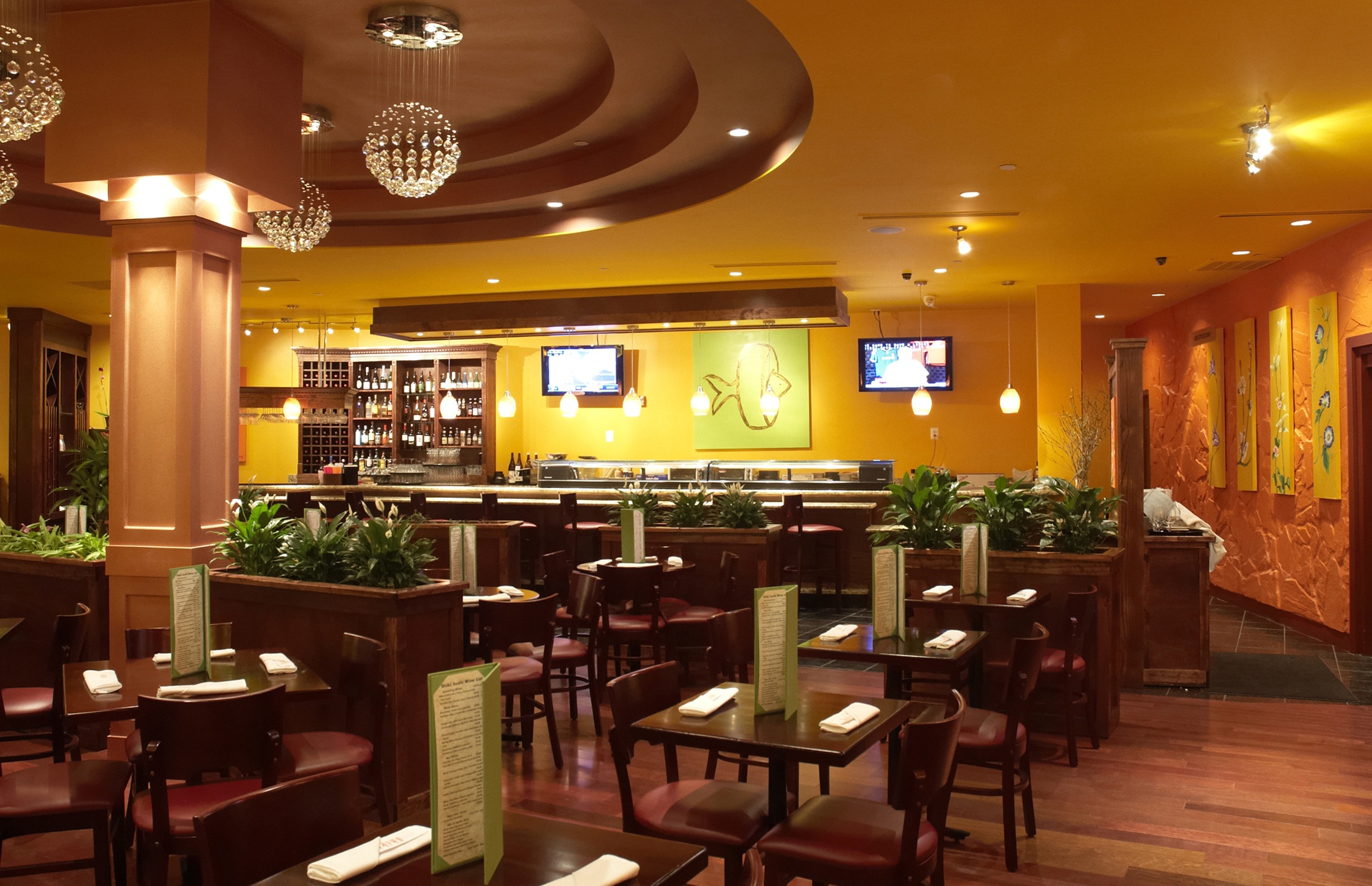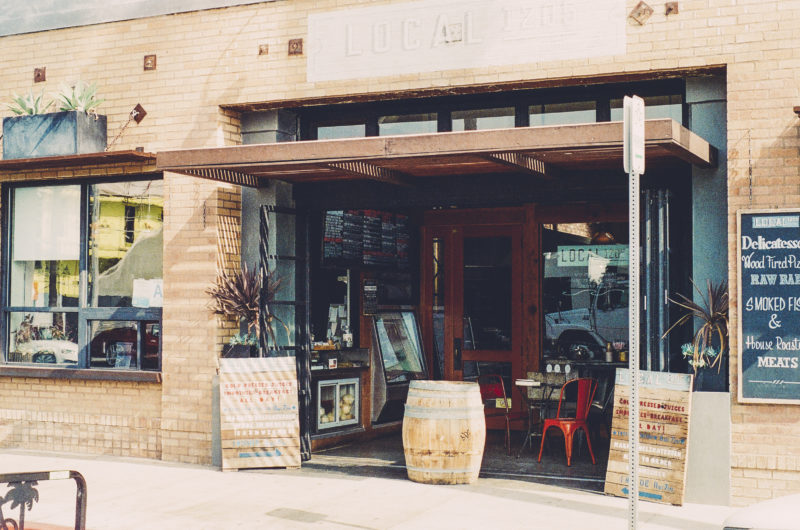Managing the restaurant inventory is an integral part of running a successful restaurant business. Inventory loss although negligible at a given point in time can scale up to a huge amount in the longer run. Hence, it is imperative that you have a tight control on your restaurant inventory. Initially, this was done manually, however, with time restaurateurs realized, that managing inventory manually, especially for a large scale restaurant business is nearly impossible and opens a wide scope of manual mistakes and discrepancies. This eventually results in escalated food costs and ultimately a potential loss for your business. Here are some tips that will help you in keeping your food costs in check.
One of the best ways to avoid such situations is by taking refuge to a robust restaurant POS which has a stellar restaurant inventory feature. Having a smart POS on board will solve half of your problems. A 2016 Restaurant Trade Survey from American Express, found that 63% of restaurant owners would invest in technology if it made day-to-day operations more efficient. Confused about how to manage your restaurant inventory in the most efficient way possible? Don’t worry, we are here to help you with it!
Stellar Ways To Manage your Restaurant Inventory
Inventory loss bleeds many restaurants dry and restaurants in the USA. Restaurateurs in the USA state as inventory management one of the top challenges of managing a restaurant. Hence, keeping a keen like on your stock and inventory becomes one of the basic prerequisites of running a successful restaurant venture. Here are the things that you must do manage your restaurant stock and inventory so as to not lose out unnecessarily.
1. Checking Stock Religiously
Since the price of raw materials in the USA are soaring high, it makes checking stock religiously and diligently all the more important. Hence, before bringing in more stock, be sure to check your inventory, and see how much is available, since you should only order raw materials as per your requirements. If you think that calculating stock on a daily basis is a tiresome job, then an inventory management software will come in handy. Most of the restaurants already use such a restaurant management software, hence if you are not, then you are definitely lagging behind! Such a software gives you the available stock count at the beginning and at the end of the day. It then calculates the balance stock automatically and tallies it with the available physical stock.
The actual difference between the ideal remaining stock according and the actual physical stock is called variance. Variance between 2-5% is acceptable as some ingredient is bound to get wasted during food preparation. Anything over the mentioned amount should be a matter of serious concern as it points at theft and pilferage. If you happen to get a negative variance, it should not be difficult for you to understand that fewer products are being used for preparation which results in degradation in quality. Thus, the variance is an important factor in kitchen management.
2. Keeping a Check On the Raw Materials
Taking into consideration the high prices of the raw materials in the USA it becomes important to keep the generation of wastage to a minimum. Managing the inventory smartly is essential to avoid wastage. Use these points to make sure that your stock is efficiently used.
- Do not call for more raw material especially when you are dealing with perishable items. In this case, minimal stocking approach is the most important.
- While making changes in the menu items, including the dishes which contain seasonal items. Firstly, seasonal items are easily available and are cheaper. Secondly, this way you will be able to attract customers with something new and also avoid wastage of perishables.
- Having a robust inventory management software sends you with real-time reports whenever an item reaches its re-order level. As soon as an item reaches its re-order level an auto-generated email or an SMS alert is sent, this saves your kitchen from running out of stock on a busy hour of the day.
- Take the necessary steps to ensure that the items are being used on a First in First out basis. This will ensure that you don’t generate kitchen waste with items remaining unused while reaching their expiry date.
3. Recipe Management
Having a standardized recipe is essentially critical for managing the restaurant inventory and controlling the food costs. Generally, in a standard recipe, the quantity of each ingredient that goes into making the dish is explicitly mentioned. These ingredients even include the items that are needed for garnishing or presentation. Not only is the quantity of each ingredient mentioned, the set process for preparing the dish, along with the necessary temperature is mentioned, this not only helps in maintaining a consistency in all the dishes across the outlets, it also helps in making sure that none of the items is undercooked or overcooked, that might lead to the generation of kitchen waste.
Hence, while there are many restaurant software available in the USA market while finalizing one, make sure that your restaurant management software has a recipe management feature. Here you can simply put all your recipes, to assess the usage of raw materials with respect to sales. This reduces the scale of theft and pilferage in the restaurant space. When it comes to the bigger chains, it helps to guarantee the taste of the dishes as the recipes will be same across the outlets. Many of the restaurant software also comes with an additional recipe costing feature. All you need to do is insert the portion of each ingredient, and the restaurant inventory software is then adequately empowered to inform you about the food cost of that dish. Ideally, the food cost should be 30% of the menu price or the selling price.
4. Central Kitchen Management
Mostly in big establishments, or large QSR chain in the USA, where consistency is the key, a central kitchen or a base kitchen is established. Be it McDonald’s, KFC or other such big brands has very conveniently established their base kitchens to streamline the entire operations. In a central kitchen, the food items are semi-processed and then are distributed to the different outlets.
So if you are running a restaurant chain, it is advisable for you to establish a base kitchen of yours. This will help you in ways more than one. First, it will ensure that consistency is maintained. Second, you will only have to control the inventory in one central kitchen instead of going through the same process for every outlet. Thirdly, this reduces the scope of inventory loss, theft and pilferage to a great extent.
Whenever an indent is raised in any of the outlets, the POS sends an alert to the base kitchen and to the owner. As per the orders placed, the base kitchen then prepares the dishes and delivers it to the respective outlet. This helps in maintaining transparency in the entire restaurant business. In addition to this, many of the outlets in large chain setups, go ahead and sell dishes which do not fall in line with the brand image. In such situations, having a base kitchen and having everything on the POS will really help you to track your restaurant business and its inventory pretty well.
It is essentially important to check and measure the sock for any damage or loss after the outlet receives the orders from the central kitchen. A GRN (Good Received Note) must be generated by the outlet receiving the stock, clearly mentioning that the stock has been received. In instances of any loss, missed order, or damage it must be clearly mentioned in the GRN.
5. Shelf Life Management
One of the most integral parts of the restaurant is the shelf-life management of the stock items. Customers in the United States are becoming more conscious towards the health and hygiene, making the need for high-quality raw materials and ingredients even more crucial. To ensure that you use only high quality of stock items, it is important to monitor your restaurant inventory, lest you use any expired ingredients.
Different items in the inventory have different shelf lives. While some item may be preserved for more than a year, others need to be consumed within a week. Hence, it is extremely important to manage the shelf life of perishable products.
A restaurant POS will come in handy in managing the shelf life of the products in the inventory. All the items in the restaurant inventory must be entered into the POS, and clearly specify for how long they can be preserved and subsequently used, before getting spoiled. If for any specific reasons, an item remains unused even after its expiry date, the POS will notify you on an immediate basis, so that you can dispose of it from your inventory.
6. Roles and Permissions
All restaurants brood to find an effective solution to avoid the persisting menace of internal thefts in the restaurant inventory. If you do not tightly check your inventory section, there is a high probability, that you will not be able to prevent your staff from pocketing the raw materials from time to time. One of the best ways to avoid this eternal problem is to have a robust inventory management software on board. With this, you can create specific roles for each task, and appoint people who would be held responsible for that task. All activities are logged, and different users can be assigned different modules to maintain a check on the inventory.
7. Reporting and Analytics
It is very important to have detailed reports and to analyze the restaurant inventory in order to decide the future course of action for your restaurant business. The sales and the raw material usage report helps to forecast the future raw material demand and to create future plans. Profit and loss reports are generated depending on the stock sale and consumption. These will further help you to:
- Analyse the trends in the inventory and hence make an informed decision, such as menu engineering. Detailed reports depending on the consumption of each item, will give the insights on which ingredients are the most popular, and needs to be utilized more in the recipes.
- Daily reports will help you to analyze daily consumption, this will help you to track daily consumption, and in a way will help you to track the discrepancies or internal theft that might be bleeding your restaurant dry.
Keeping a tab on your restaurant inventory is essentially important if you do not want to lose money unnecessarily. The restaurant industry in the USA is notorious for internal theft and pilferages, inventory is that section of the restaurant where the possibilities of such instances are rather high. In order to avoid any situations, it is highly recommended that you keep the above-mentioned point in mind, and accordingly install a robust restaurant management software, that will help you to have an overflowing cash register in your restaurant business.


